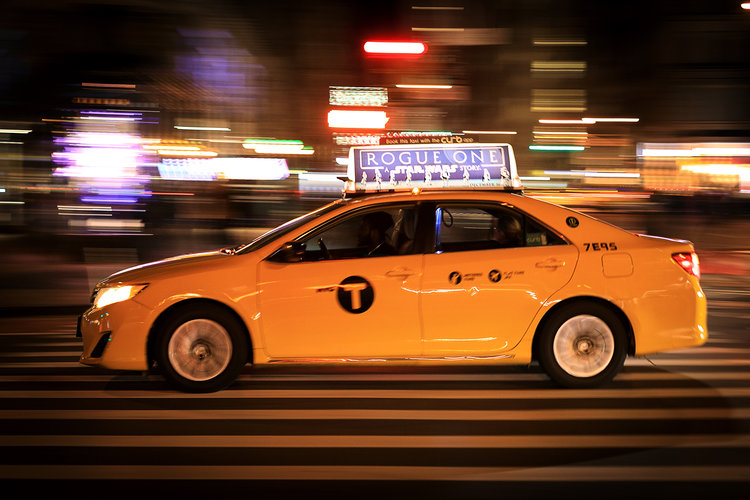The most important thing to recognize when you start communicating by a digital sign is to realize that viewers don’t care about your message just because it’s digital unless you give them a reason to care. Certainly this applies to any communication effort. Just presenting information on a digital sign does not nullify lazy thinking or uninspiring content or other communication snafus. Our quality, customer care and ability to meet your deadline or budget is the reason why signage Sydney is first choice for signs.
Fortunately for anyone using digital signage, it has proven to be a great platform for breaking out of boring routines by experimenting with content, having a bit of fun, maybe even jolting your audience with something unexpected, and then seeking to engage your audience beyond a casual glance. For example, if your content produces a smile instead of a glance, you might just be on to something.
Because of its ability to change messages on the fly, by schedule, by data, or by various environmental triggers, digital signage represents a new way of thinking about communicating. It empowers communicators to address the ways consumers, customers, and employees think and act at the point-of-sale, point-of-wait, and in the point-of-transit environments. Since digital signage is not print, and it’s not television, it requires a different approach.
Modern digital signage products and services provide tools to help make your in-house messages or advertising reliable, consistent, on time and of high quality. However, a tool is not a strategy in itself. No worries! These guidelines will equip you with some key facts to make your messages more engaging and appealing.
Digital Signage Content Basics
When people are on the move, you have only seconds to engage them. Here are some attention-grabbing strategies to incorporate into your messages:
- Use bright colors.
- Use motion in the narrative to help tell the story.
- Refresh signage content often to reflect sales, special offerings–and sales goals.
- Reinforce product and branding messages.
- Know your customers. Speak to their interests. Content should be dynamic and reflective of what people are doing.
- Make sure the digital media experience complements all marketing objectives, from merchandising to branding.
- Keep the look and feel of your content consistent with your brand equity.
- Avoid excessive text. Keep your messages as visual as possible.
- Don’t try to deliver full advertising messages, as you would for television, print or long-form video. Show product glimpses that pique curiosity or provide information.
- Create designs that can exist independent of sound; assume that it will not be heard. On the other hand, see the next point.
- Use sound when the signage location allows it.
- Try to incorporate product tips and information.
- Experiment. Have fun.
Digital Signage Deployment Strategies
- Use larger displays when possible and practical. Bigger increases WOW factor!
- Make sure your messages are relevant to the time, place and purchase opportunities at hand.
- Incorporate touch screen technology when interactivity is appropriate and useful to the audience.
- Utilize motion sensor technology when appropriate and useful to the audience.
- Utilize custom data when appropriate and useful to the audience.
- Keep the customer experience at the front of your mind as you choose content. Digital signage should enhance–rather than intruding upon–the shopping experience.
- Use an editorial calendar to determine the best timing for content.
- Incorporate frequent brand IDs for your company and its products.
- Use your signage to create add-on sales: accessories with that dress, extra cheese for that burger, etc.
- This strategy has created double-digit sales increases for many companies.
A Few Thoughts About Digital Signage Placement
Don’t make this mistake: not giving much thought to sign placement, or even worse, wasting your efforts and budget on misplaced digital signs. People are not likely to look up to your ceiling for product announcements. Instead, place product-specific content where products are, preferably at eye-level or shelf level. The closer the advertising to the purchase opportunity, the more effective it will be.
Even more than just hanging a digital sign where it’s convenient to see, think a tad further about the bigger picture. For example, digital signage can influence the ambiance of a building by the way it is integrated into the environment. Have you considered that your digital sign may be way too small and unimpressive to make your point? Try a video wall instead! Get creative… think of your digital displays as canvases for creative expression.
Finally, by locating your signage in the optimal place and choosing the best size, the creative content can now fully stimulate the senses, arouse and influence behavior that complements the purpose of the building’s design, which reinforces and extends the core brand image. Empowered with great design, you can inspire your viewers with an aesthetic experience.
Feeling overwhelmed or out of your comfort zone? Consider asking a full-service digital signage provider with a good reputation to help design your first campaign. This will reduce your learning time and increase your chances of success considerably. A provider of professional creative services will do their homework by performing a thorough discovery process. They will maintain your brand standard, and if you don’t have a brand standard, they will help establish one. From there they will research your audience to understand what they care about and create a call to action. Finally, a successful campaign will have various forms of measurement based on your return-on-objectives (ROO).
Given the time and willingness to learn from trial and error anyone, regardless of background, can be successful with digital signage; but, it’s important to shake off the common “a slide show is good enough” mentality -it’s not an effective strategy for digital signage. Sure, everyone is not a Picasso per se, but everyone is creative to some degree. A well-conceived strategy masters content that transforms digital signage from mere displays, computers, and cables into a dynamic communications medium with a limitless ability to inspire, inform and motivate.
David Little is a charter member of the Digital Screenmedia Association with 20 years of experience helping professionals use technology to effectively communicate. For further digital signage insight from Keywest Technology, visit our website for many helpful tips and examples. For more in-depth research from Keywest Technology, download our free digital signage white papers and case studies.
Article Source: http://EzineArticles.com/expert/David_Little/58036
Article Source: http://EzineArticles.com/8932760



